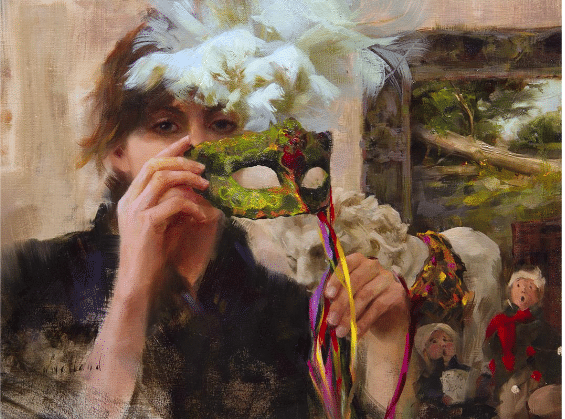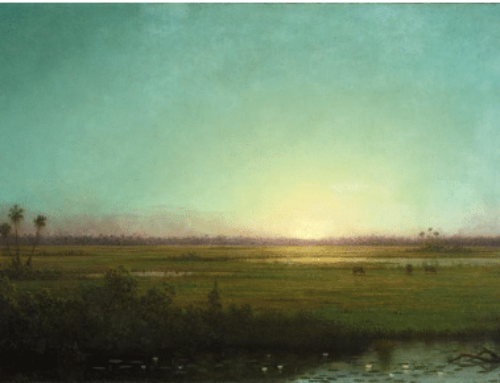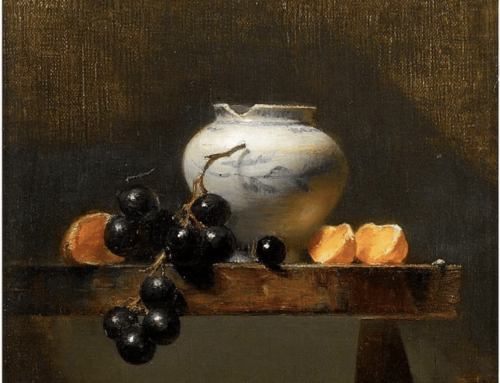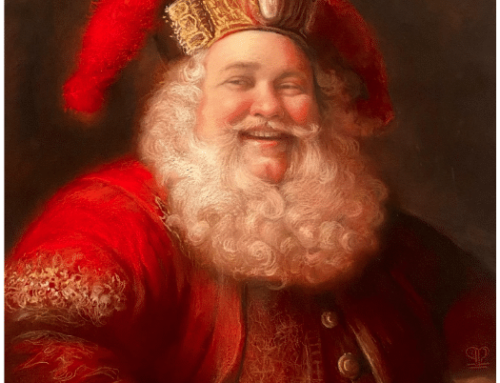The human portrait remains one of the most challenging and rewarding of artistic pursuits. Getting an accurate image down is hard enough, but then there’s getting the LIFE into it. To those not privy to the process, a successful finished portrait seems like a miracle, a treasured object full of emotion and magic. And so it is.
An amalgam of anatomy knowledge, learned skill, and fresh observational drawing is needed for getting the underlying structure right. However, then there’s connecting with the sitter and going beyond surface in search of the “true self” of your subject. Finally, a pinch or two of creative daring helps capture life-like freshness and sparkle.
The following four artists take us behind the magic and explain their unique take on these and other skills in their own words.
Oil painter Katie Swatland believes that our own physical construction is one of the purest and most complex problems for the painter modeling three dimensions in two-dimensional space. In The Underlying Structure of Figurative Art, along with step-by-step photos of how she builds a portrait, she breaks down the underlying process into the skill of observation, the ability to convey the three-dimensionality of form convincingly, and the cultivation of edge, color and value sensitivity.
Yet evidently it’s her personal interest in the unspoken stories and hinted-at inner spirit of her subjects that draw her brush. Swatland’s figurative paintings get past convention and surface through the artist’s use of emotionally charged and evocative (if not actually symbolic) settings, props, and emotionally expressive compositions.
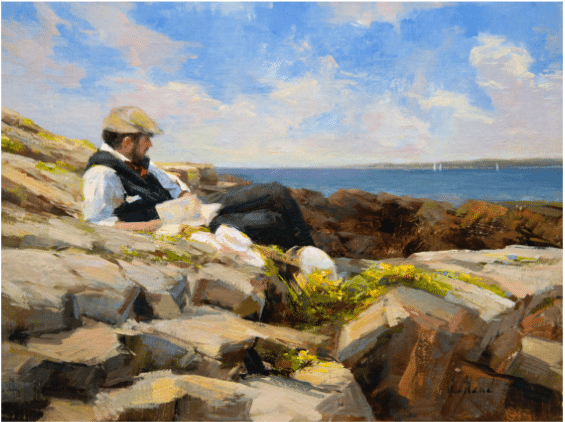
Katie Swatland, Summer Afternoon, Oil on panel, 12 x 16 inches
All goes back, she writes, to the crucial understanding of the nature of the underlying structure. “What could be more beautiful than the pursuit of light and color,” she asks “. . . the foundational elements to all that we experience.”
Watercolor artist Karisa Keasey believes that knowing the person you paint changes the way you paint them. In “What I Learned Painting 30 Portraits of Refugees,” Karisa explains how she adjusts composition, color, foreground, and background but also how she seeks to go beyond stereotypes and suggest a more complete picture of her subject’s story when painting a portrait. Karisa has published a book of her portraits of refugees in the Pacific Northwest, 50% of the sales of which directly benefit refugee families.
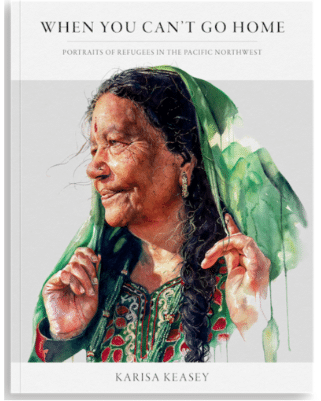
Multimedia artist Justin Hopkins writes about how painting portraits with other painters forces you to be more adventurous and ambitious than you may otherwise have been when working for a client or developing a series for a gallery – skills you can draw upon with a bit more confidence when the pressure’s back on. In On Painting and Collaboration, he writes about a project he undertook with two other artists who added and subtracted from the same composition to create a new and unplanned result.
Rose Frantzen was born, raised, and returned to Maquoketa, Iowa where the rural lifestyle and landscape continue to provide inspiration for her paintings.
In one of her more recent shows, “The Optics of Illusion,” she exhibited a series of portraits in dialogue with optical illusions. The series “dives into our national conversations about identity, tribalism, and ‘othering’ while exploring the likelihood that we might mis-perceive others and even ourselves,” she says.
For example, in “Carrying the Weight on an Occluded Reflection,” the woman’s reflection is inverted and obscured within an archway that seems asymmetrical, within a framework that only appears to be misaligned.
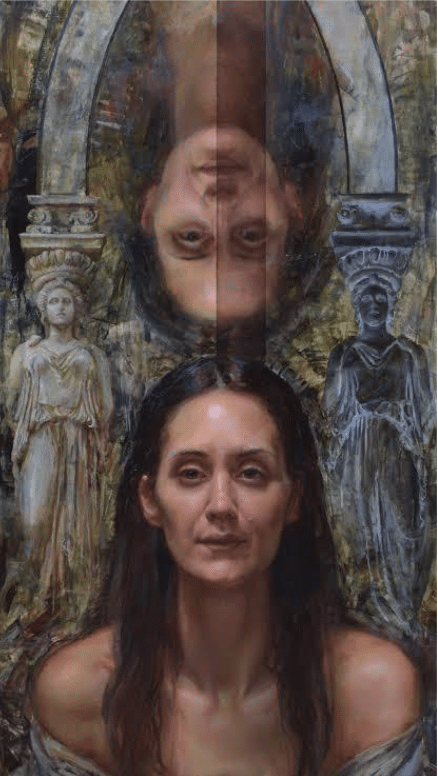
Rose Frantzen, Carrying the Weight on an Occluded Reflection, oil
Rose in this video breaks down her process in step-by-step detail, detailing how to load brushstrokes with emotion, how to connect to your sitter, and how to wed likeness to the creative beauty sitters love to see, along with many other aspects of her craft.
Johnny Depp Issues Soulful Self-Portrait Edition to Benefit Charity
$200 from each sale will go directly to Mental Health America
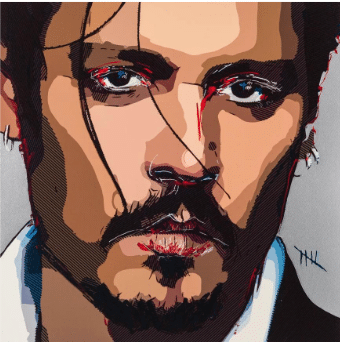
Johnny Depp, Five (2023) courtesy Castle Fine Art
Actor Johnny Depp has been exploring music as well as visual art of late, and in July held an edition sale of his newly revealed self-portrait titled Five (2023), “conceived as he entered the fifth year of a challenging period in his life,” according to the official press statement. “If the piece resonates with even just one person, this art has purpose,” Depp says.
The self-portrait, Depp’s first, was sold as a time-limited edition from 20 July for 13 days only (“a number significant to the artist” says the release) and priced from $2,430. From each sale, $200 will go directly to Mental Health America, a community-based non-profit charity focused on mental health issues. Fans will be delighted to see that each work—based on a photograph taken for Christian Dior Parfums in 2015—is signed by Depp and emboss-stamped by hand with “Johnny’s personal mark of authenticity”.
The self-portrait piece is available with Castle Fine Art, a subsidiary of the Washington Green Fine Art retail group, which also offers works by Bob Dylan, Billy Conolly and Marvel. Earlier this year Depp created a series of silkscreen prints that netted $5.6 million.
“For many years, I really held myself strictly to just the day job of the film business, even though in my heart and forever I’ve been a musician, and I’ve always needed to escape into a blank piece of paper, whether it be writing, drawing or painting a blank canvas,” Depp says.

